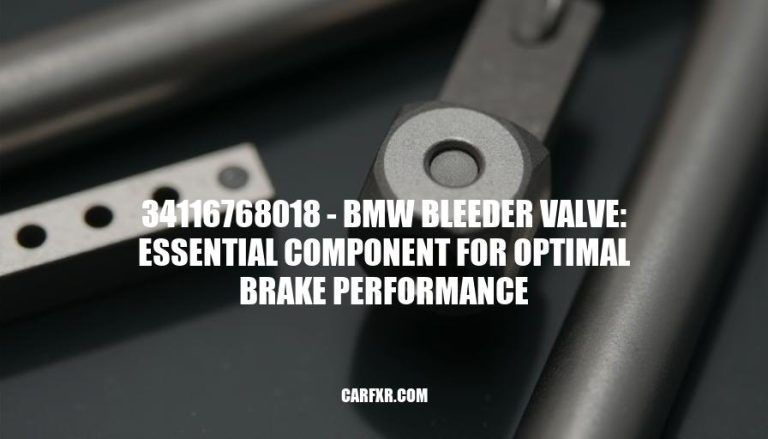
The BMW Part bleeder valve plays a big role in the car’s braking system. It helps get rid of air that gets stuck in the brake lines so the brake fluid can flow properly. If it doesn’t work right, the brakes might not perform well and could even fail.
Jack and jack stands
Lug wrench
Brake bleeder kit (including a hose and a container)
New bleeder valve (BMW Part 34116768018)
Flathead screwdriver or a suitable wrench
Brake cleaner
Gloves and safety goggles
Ensure the vehicle is on a flat surface and the parking brake is engaged.
Wear safety goggles and gloves to protect your eyes and hands.
Use jack stands to support the vehicle securely after lifting it with a jack.
Avoid smoking or open flames near the brake components.
Work in a well-ventilated area to avoid inhaling brake dust and fumes.
Lift the vehicle using a jack and secure it with jack stands.
Remove the wheel to access the brake caliper and bleeder valve.
Locate the bleeder valve on the brake caliper.
Use a flathead screwdriver or wrench to loosen and remove the old bleeder valve.
Clean the area around the bleeder valve with brake cleaner to ensure a clean working surface.
Install the new bleeder valve by screwing it into place. Ensure it is tight but do not overtighten.
Reattach the wheel and lower the vehicle back to the ground.
Bleed the brakes to remove any air from the brake lines. Attach the hose from the brake bleeder kit to the bleeder valve and open it slightly to allow fluid to flow into the container.
Have an assistant pump the brake pedal while you hold the valve open. Close the valve, release the brake pedal, and repeat until no air bubbles are present in the fluid.
Test the brakes by pressing the brake pedal a few times to ensure proper operation.
If the bleeder valve is stuck, apply penetrating oil and let it sit for a few minutes before attempting to remove it again.
If air continues to enter the brake lines, check for leaks in the brake lines and connections. Ensure all connections are tight and secure.
If the brake pedal feels spongy, repeat the bleeding process to ensure all air is removed from the system.
By following these steps, you should be able to successfully install the BMW Part bleeder valve 34116768018.
If you encounter any issues, refer to the vehicle’s service manual or consult a professional mechanic for further assistance.
To maintain the BMW Part bleeder valve 34116768018 and ensure its longevity and optimal performance, it’s essential to follow best practices.


